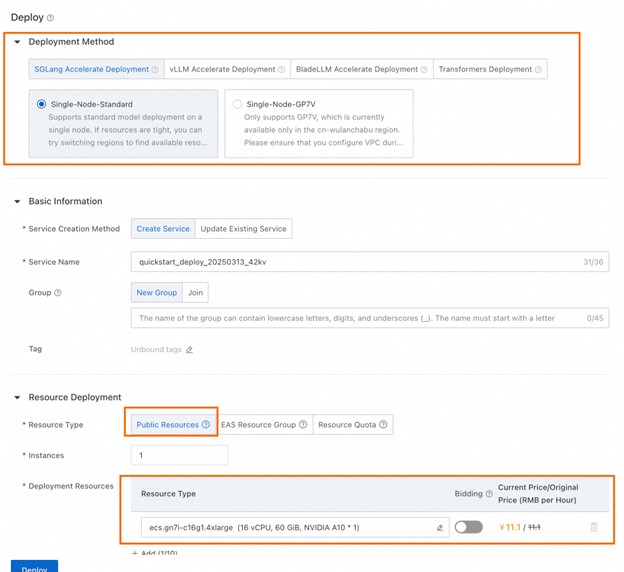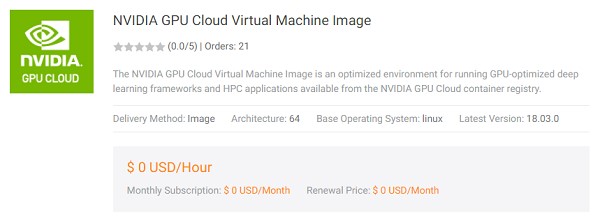The landscape of Artificial Intelligence is evolving at
breakneck speed, with Large Language Models (LLMs) at the forefront.
The landscape of Artificial Intelligence is evolving at
breakneck speed, with Large Language Models (LLMs) at the forefront. These
sophisticated models can understand and generate human-like text, write code,
translate languages, and much more. Among the rising stars in the LLM space is
the DeepSeek family of models, known for their impressive capabilities,
particularly in code generation and reasoning.
But having a powerful model is only half the battle. To
truly leverage its potential, you need a robust, scalable, and reliable
platform for deployment, inference, and integration. This is where Alibaba
Cloud comes in, offering a comprehensive suite of services perfectly suited for
hosting and utilizing cutting-edge AI models like DeepSeek.
This post serves as an introduction to using DeepSeek models
within the Alibaba Cloud ecosystem. We'll explore what DeepSeek offers, why
Alibaba Cloud is an excellent choice for deploying it, and the primary ways you
can get started.
What is DeepSeek?
Developed by DeepSeek AI, the DeepSeek models represent a
significant advancement in open-source and accessible AI. Key highlights
include:
-
Strong
Performance: DeepSeek models consistently rank highly on various LLM
benchmarks, demonstrating proficiency in both general language tasks and
specialized areas.
-
Coding
Prowess: DeepSeek Coder, in particular, has gained recognition for its
exceptional ability to understand, generate, and complete code across
multiple programming languages.
-
Openness
(for some models): Several DeepSeek models are released under
permissive licenses, allowing developers and organizations greater
flexibility in their use and deployment compared to purely proprietary
models.
-
Efficiency:
The models are often designed with efficiency in mind, aiming to balance
high performance with reasonable computational requirements.
Whether you need a powerful coding assistant, a versatile
chatbot foundation, or a model for complex text analysis, the DeepSeek family
likely has an option worth considering.
Why Choose Alibaba Cloud for DeepSeek?
Deploying and managing LLMs involves significant
infrastructure considerations. Alibaba Cloud provides a compelling environment
for several reasons:
-
Scalability
and Elasticity: LLM inference can be resource-intensive. Alibaba
Cloud's services, like the Platform for AI (PAI) and Elastic Compute
Service (ECS), allow you to scale your compute resources up or down based
on demand, ensuring performance without overprovisioning.
-
Managed
AI Platforms (PAI): Alibaba Cloud's Platform for AI (PAI) offers
simplified workflows for AI development and deployment. Specifically,
PAI-EAS (Elastic Algorithm Service) is designed for easy deployment of
models as scalable API endpoints. This significantly reduces the operational
burden of managing infrastructure, updates, and scaling.
-
Integration
with Ecosystem: Deploying DeepSeek on Alibaba Cloud allows seamless
integration with other cloud services like Object Storage Service (OSS)
for data storage, API Gateway for managing access to your model endpoint,
MaxCompute for big data processing, and various database services.
-
Robust
Infrastructure: Alibaba Cloud offers high-performance computing
instances (including GPU options vital for LLMs), reliable networking, and
data centers across numerous regions, ensuring low latency and high
availability.
-
Security
and Compliance: Leveraging a major cloud provider like Alibaba Cloud
provides robust security measures and helps meet various compliance
standards, which is crucial when dealing with potentially sensitive data
processed by LLMs.
-
Cost-Effectiveness:
With pay-as-you-go pricing models and options for reserved instances, you
can optimize costs based on your usage patterns. Managed services like
PAI-EAS can also be more cost-effective than managing the entire stack
yourself.
How to Access and Deploy DeepSeek on Alibaba Cloud
There are primarily two approaches to using DeepSeek models
on Alibaba Cloud, catering to different needs and technical expertise:
Method 1: Using Platform for AI - Elastic Algorithm
Service (PAI-EAS) (Recommended)

Fig 1: Configuring a DeepSeek model deployment on
PAI-EAS
PAI-EAS is Alibaba Cloud's managed service for deploying AI
models as online prediction services. This is often the easiest and most
efficient way to get started.
-
Concept:
You select a DeepSeek model (either a pre-built image provided by Alibaba
Cloud/partners if available, or by packaging the open-source model
yourself into a compatible format) and deploy it using PAI-EAS. The
service handles the underlying infrastructure, scaling, and provides you
with an API endpoint.
-
Steps
(High-Level):
-
Prepare
the Model: Obtain the desired DeepSeek model weights (e.g., from
Hugging Face or the official DeepSeek source). You might need to package
this into a container image along with the necessary inference code
(e.g., using libraries like transformers, vLLM, or Triton Inference
Server). Alibaba Cloud often provides base images or examples to simplify
this. Check the PAI documentation or ModelScope (Alibaba's model
community) for potential pre-packaged DeepSeek options.
-
Navigate
to PAI Console: Log in to your Alibaba Cloud account and go to the
Platform for AI console.
-
Select
PAI-EAS: Choose the Elastic Algorithm Service for deployment.
-
Configure
Deployment: Create a new service, specifying:
- The
model source (e.g., pointing to your container image registry).
- The
required resources (CPU, memory, GPU type and count – crucial for LLMs).
- Scaling
parameters (minimum/maximum instances).
Deploy:
Initiate the deployment process. PAI-EAS will pull the image, provision
resources, and set up the endpoint.
Access
the Endpoint: Once deployed, PAI-EAS provides an invocation URL and
authentication details (like an API token). You can then send requests
(e.g., prompts) to this endpoint via HTTP POST requests using tools like curl
or SDKs in Python, Java, etc.
Pros:
Managed infrastructure, auto-scaling, simplified deployment, integration
with monitoring and logging.
Cons:
Less control over the underlying environment compared to self-hosting;
potentially reliant on available pre-built images or requires
containerization effort.
Method 2: Self-Hosting on Elastic Compute Service (ECS)
or Container Service (ACK)

Fig 2: Selecting a GPU-accelerated instance type
For users needing maximum control or having specific custom
environment requirements, you can host the DeepSeek model directly on virtual
machines or Kubernetes clusters.
-
Concept:
You provision virtual machines (ECS instances, likely with GPUs) or set up
a Kubernetes cluster (ACK). You then manually install the necessary
dependencies (Python, CUDA, AI libraries), download the DeepSeek model
weights, and run an inference server (like a Flask/FastAPI app wrapping
the model, or using frameworks like vLLM or TGI).
-
Steps
(High-Level):
-
Provision
Compute Resources: Create ECS instances (choose appropriate GPU types
like NVIDIA A10, V100, A100) or set up an ACK cluster.
-
Set
up Environment: Install OS, drivers (NVIDIA drivers, CUDA), Python
environments, and required libraries (transformers, torch, vllm, etc.).
-
Download
Model: Fetch the desired DeepSeek model weights.
-
Develop/Deploy
Inference Server: Write or configure an application that loads the
model and exposes an API endpoint for receiving prompts and returning
generations.
-
Manage
and Scale: You are responsible for monitoring, security patching,
load balancing, and scaling the setup manually or using Kubernetes
features.
Pros:
Full control over the environment, software stack, and configuration.
Cons:
Significantly higher operational overhead, requires expertise in
infrastructure management, responsible for manual scaling and high
availability.
Getting Started: A Conceptual Example (using PAI-EAS)
Imagine you've deployed a DeepSeek model via PAI-EAS. You'd
receive an endpoint URL and an authorization token. Making a request might look
conceptually using Python's requests library.
Use Cases and
Considerations
Integrating DeepSeek on Alibaba Cloud opens doors for
numerous applications:
-
Intelligent
Coding Assistants: Integrate DeepSeek Coder into IDEs or development
workflows.
-
Enhanced
Chatbots & Virtual Assistants: Build more capable and
context-aware conversational AI.
-
Content
Generation: Automate drafting emails, reports, marketing copy, or
creative writing.
-
Text
Summarization & Analysis: Quickly extract key information from
large documents.
-
Translation
Services: Leverage LLM capabilities for nuanced translation.
However, keep these points in mind:
-
Cost:
GPU instances and sustained inference can be costly. Monitor usage and
optimize resource allocation. PAI-EAS offers pay-as-you-go, potentially
reducing costs for sporadic usage.
-
Model
Selection: Choose the right DeepSeek model variant based on your task
(general vs. code), performance needs, and resource constraints. Larger
models offer more capability but require more powerful (and expensive)
hardware.
-
Data
Privacy: Understand Alibaba Cloud's security and data handling
policies, especially if processing sensitive information.
-
Latency:
Network latency can impact real-time applications. Choose the appropriate
Alibaba Cloud region closest to your users.
Conclusion
DeepSeek models offer remarkable AI capabilities,
particularly in coding and reasoning. By leveraging Alibaba Cloud, you gain
access to a scalable, reliable, and feature-rich environment to deploy and
manage these powerful tools effectively. Whether you opt for the simplified,
managed approach of PAI-EAS or the full control of self-hosting on ECS/ACK,
Alibaba Cloud provides the necessary infrastructure backbone.
Exploring
DeepSeek on Alibaba Cloud allows developers and businesses to integrate
state-of-the-art AI into their applications, driving innovation and unlocking
new possibilities. Start exploring the documentation, experiment with the
services, and see how you can harness the combined power of DeepSeek and
Alibaba Cloud today.


 AI Acceleration Solution
AI Acceleration Solution
 Tongyi Qianwen (Qwen)
Tongyi Qianwen (Qwen)
 Alibaba Cloud for Generative AI
Alibaba Cloud for Generative AI
 Platform For AI
Platform For AI